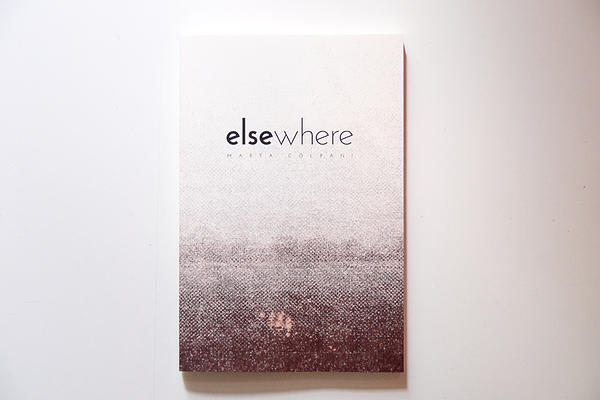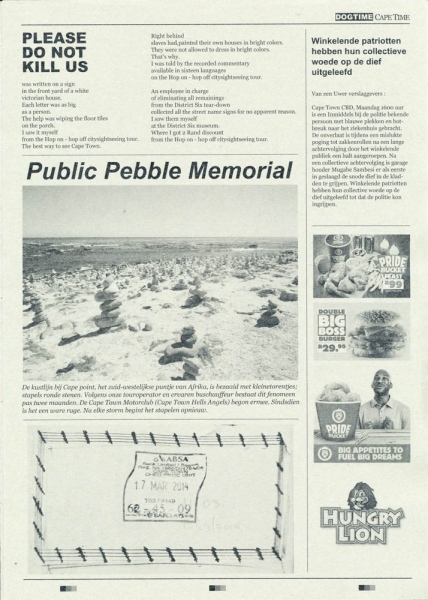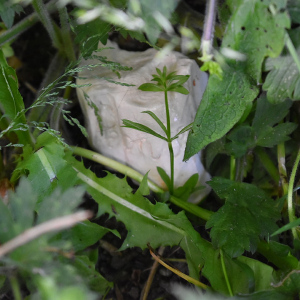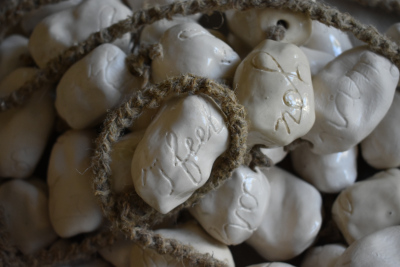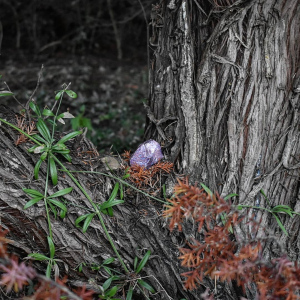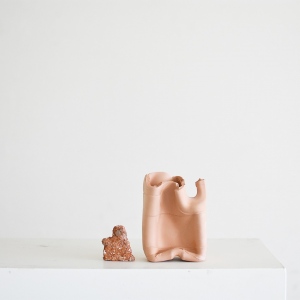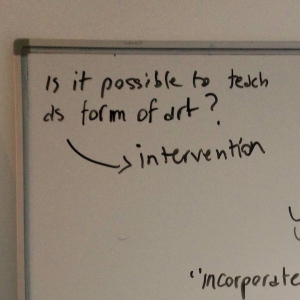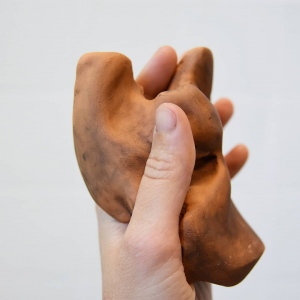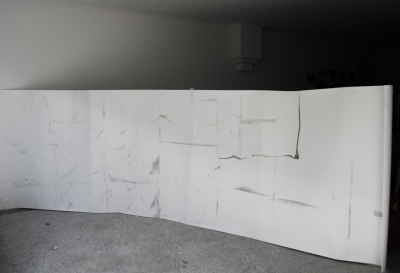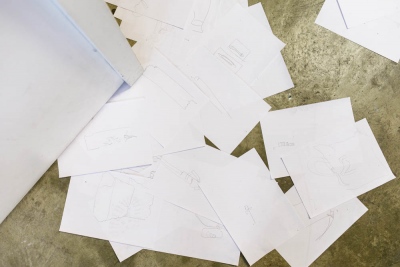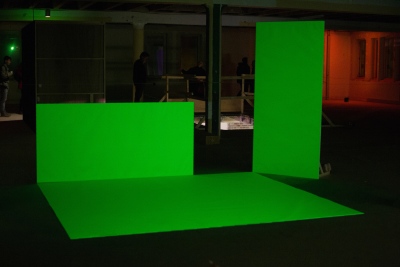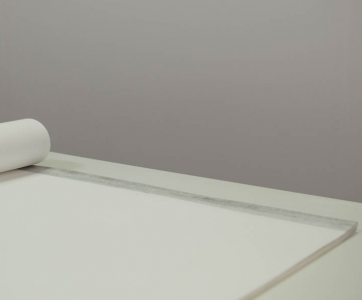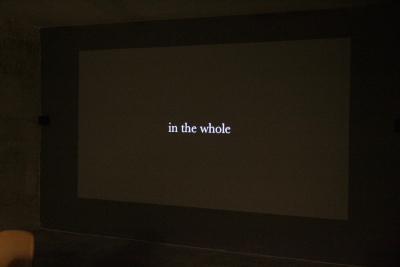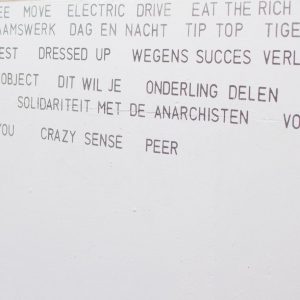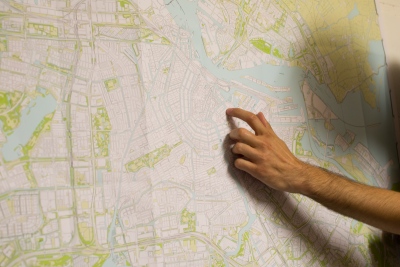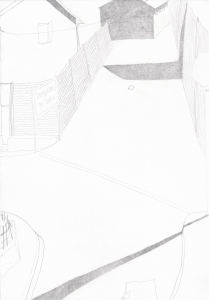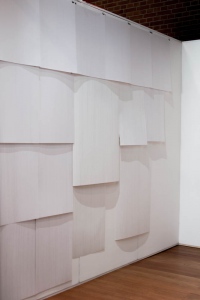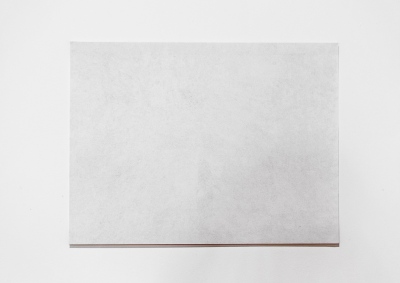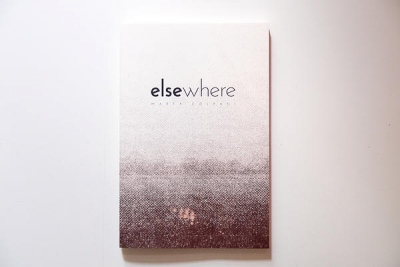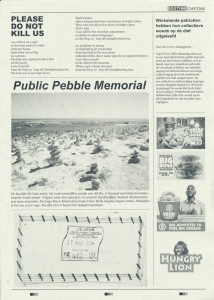lasciare le tracce per ritrovare la strada (2020 - 2021)
Lasciare le tracce per ritrovare la strada means "to leave a trail in order to find a way". It is an installation spread over different countries, created by leaving individual stones at a number of locations over the period of one and a half year. Every individual stone and placement are documented with a photograph and the location where the object has been left.
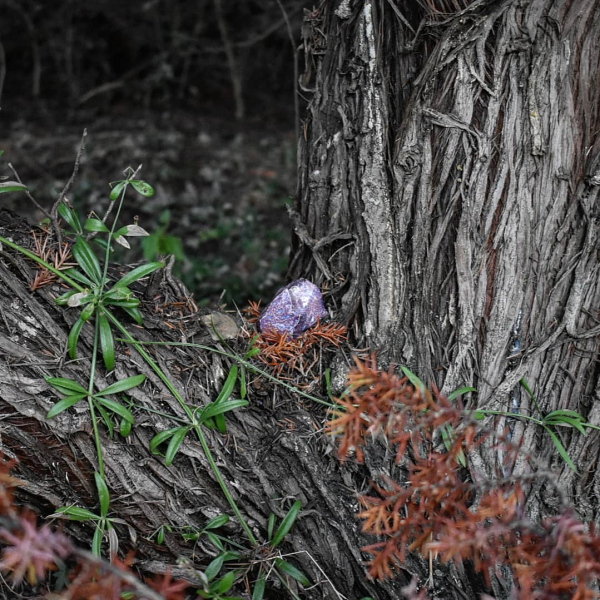
#8, Marritza (IT)
it is believed to be a stone (2019)
Small compositions up to 40 x 40 x 50 cm, ceramic objects (glazed/ unglazed)
Stones are transcendent material. Something I can hold in my hand and at the same time is part of the universe. A piece of worthless dust which is also a witness from other times long before I existed and long after I will be gone. Witness of the human greed to possess and control, to build and destroy and shape the world, but also of our desire to connect with nature and the universe. Stones lend themselves to be charged with meaning and histories that might be totally imagined.
A few compositions are pictured on this page.

teaching practice (ongoing)

HOLDS (2018-2020)
During the Amsterdam edition of the Near Field Communication Digital Art Biennale at the Tolhuistuin, Marta Colpani made drawings of the visitors' hands while they were holding their phones. The drawings were piled up on the tables and benches in the garden.
Following the event, Colpani also reproduced some of the holds by holding clumps of clay. These ceramic objects are presented as accessible objects that the viewer is invited to take into their hands.
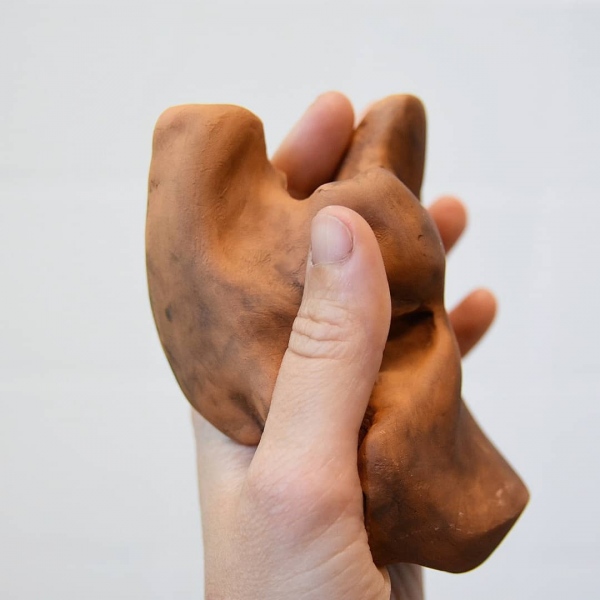
GREEN SCREEN (2018)
Pencil on paper on wooden structure, 150 x 450 cm.
Green screens are widely used in video and photography in order to compose two images together. The screens, very often green, ultimately disappear from the image, being replaced with another image. Colpani made a detailed drawing of the surface of one large sheet of green screen paper installed in her studio, after it had been used for several photography and video productions.
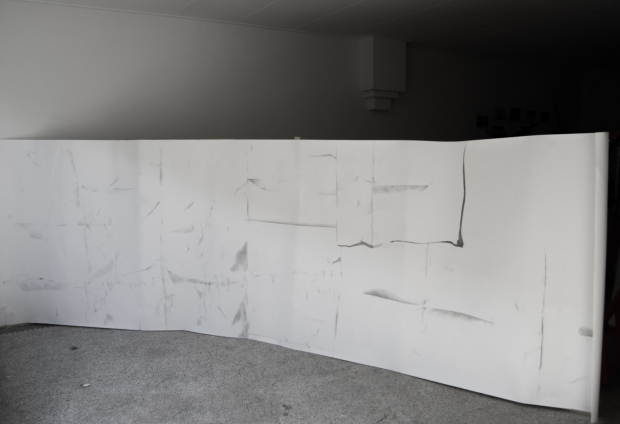
PRESENT TIME STATION (2017)
Attempts at drawing
A4 drawings spread (floor/ bar)
During three weeks Marta Colpani, Nishiko (JP) and Esther Brakenhoff (NL) worked in the same exhibition space, together performing the making of the exhibition itself. During this time Colpani gave herself the task to repeat the basic drawing/ looking exercise consisting of drawing from a real object while looking only at the object itself, not at the paper. Along with the works of Nishiko and Brakenhoff, Corridor then became gradually filled with more and more drawings of things found in the exhibition space (A4’s on the floor).
Photos by Ayako Nishibori.
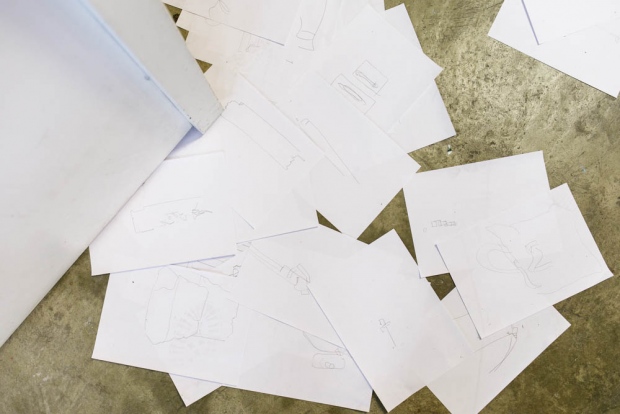
PICTURE (2017)
Picture, mixed media installation and video projection
Have your picture taken, mixed media installation and performance
Picture and Have your picture taken are two installations realized in collaboration between Marta Colpani and Olivier Oosterbaan. The two installations, one of which consisted essentially of a performance, were part of Dante Land (Paleis van Mieris).
Both installations have to do with the situation of having one's picture taken, of creating the space of the image within a real space, and of enacting one's image as imagined and desired while being photographed.
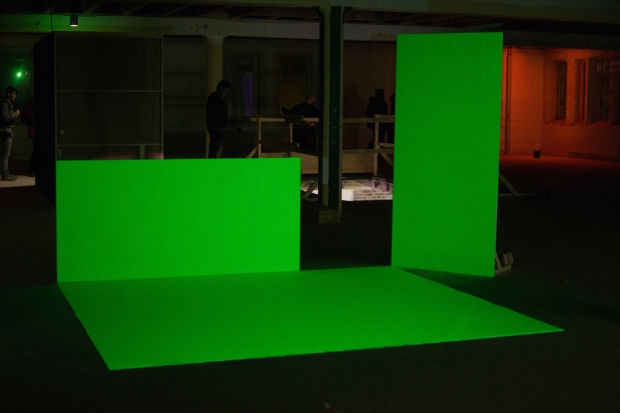
DISTANCE (2016)
31 drawings bound in a book (Japanese binding), 70 x 100 cm, pencil on paper.
The book is a manifestation of experiencing distance and time in the city of Amsterdam. It is made of 31 drawings of the time it took Colpani to walk to 31 different destinations in the city.
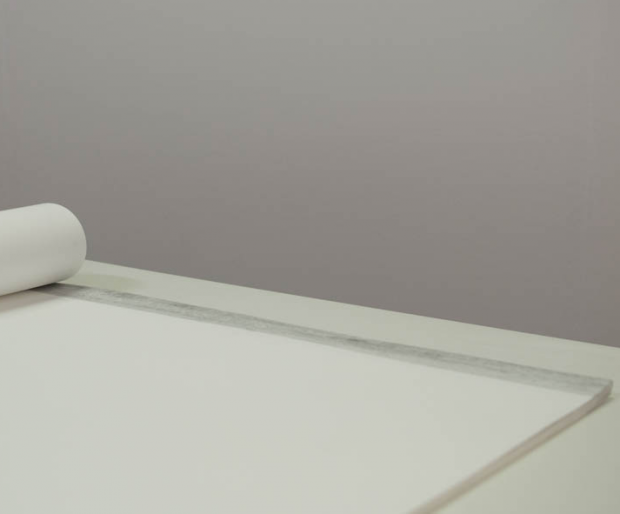
JAM K¨ETU/ I AM HERE (2016)
During the short residency program "The Encounter" (IT/ AL), Colpani worked with the situation of being in Albania for the first time without knowing the language. Working with Albanians met during the residency, she realized a short video (text and sound), where she tries to master a sentence in Albanian with a flawless accent.
The sentence, composed by Colpani with text she found at Tirana Airport when she arrived, is "Jam këtu në të gjith boten", which means "I am here in the whole world".
"The Encounter"is a residency program at UNIDEE, Pistoletto Foundation (Biella, IT) and Art House Shköder (Shköder, AL) with Albanian artist Adrian Paci.

AS WORDS (2016)
With this work, Colpani explores her relation to her living environment in relation to meaning and language by collecting all the written words that are present in her living environment.
# 1
Blackboard installation
During an open studio residency at Peer, Colpani collected all the words that she encountered while she walked daily to the studio. These words are from different sources such as displays on the street, names of shops, slogans, home tv screens visible from the streets, graffiti, clothes of passer-by. During the residency, Colpani used the coffee shop's blackboard, usually used to advertize new shop or menu items, to display on the street the words she collected during her walks. This way, the "fed" Amsterdam back to Amsterdam, using a marketing tool to speak to the overly-marketed European capital.
# 2
Pencil on wall
The studio space was filled with a pencil drawing of her walk, which consisted in the words she found on her way to the Peer studio.
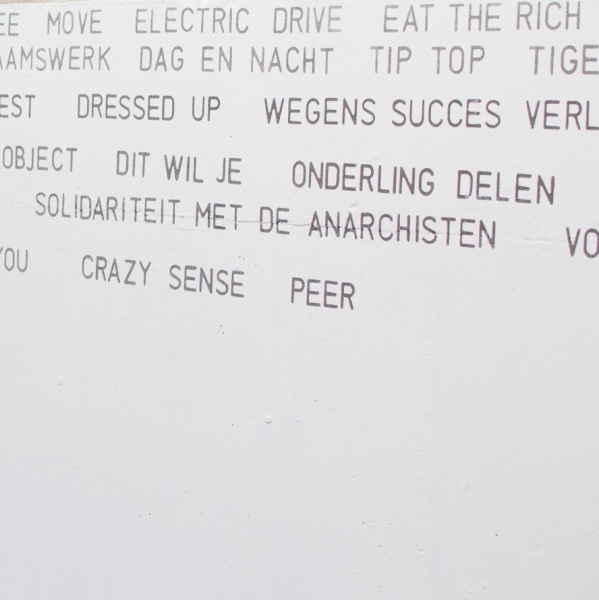
EXERCISE IN POWER: DISTANCE (2016)
Workshop, six participants, one month duration.
Final results: mixed media installation, publication.
Exercise in power: Distance was a one-month workshop open to participants from any background with at least a few things in common: affective engagement towards their living environment, the desire to invest that engagement in an experiment that would include others, and the willingness to do so through the language of art. The participants were invited to join Colpani in Peer, an artists’ working space in the Red Light District of Amsterdam, every Sunday of the month. Part of the exercise was to reach Peer on foot, and everyone chose a different way of doing so, documenting the walk and telling about their experience.
Later on, the participants moved away from their individual narrations and started converging towards an account of Amsterdam that came to belong to the group, rather than to any of its members alone. The strongly individualized experience of the environment where we live in all its forms – text, images, sense of direction, isolation, obstacles, perception of private spaces that we cannot enter, – that come to define us, had to become one story, one voice. Inevitably fragmented, nonetheless coherent. In practice, they started to construct one single installation together to be presented during the exhibition that followed the workshop. During this process, they gradually gave up our pristine ideas in order to enter into new, shared meaning in the material at hands. A personal reassembling process took place: they were re-forming their stories and perceptions in order for them to become part of the group configuration that was to emerge.
The open studio, workshop and exhibition at Peer Paper Platform, as well as the publication that resulted from it, were kindly supported by Amsterdams Fonds voor de Kunst.
Read more about the background and aftermath of this project: Exercises in power. On the experimental nature of democracy and art. From roots§routes: participation. Anno VII, n°24 (2017).
An insightful review of this project by art critic and researcher Nicola Bozzi can be found on Domus Arte.
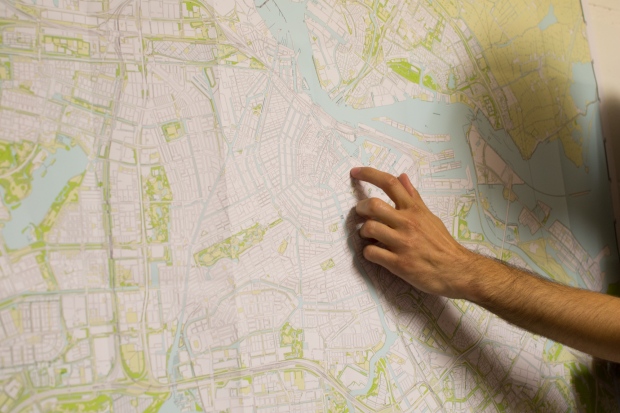
FENCES (2016)
(9) 20 x 30 cm, pencil on paper/ sound.
The nine drawings and the recordings are presented together, as a portrait of the border dividing the city of Gorizia in two, the Italian and the Slovenian half. This border is historically very charged and still affects how people relate to each other, even now that Slovenia has become part of the European Union. The emotional and historical weight of this separation form an interesting contrast with the border itself, which is very fragmented and in many places looks like a garden fence. Most of the border in the city is a bicycle path. The recordings are made during the making of the drawings, and include some dialog with passers-by who approached me in both languages (Italian and Slovenian).

LINES (2015-ongoing)
The work is a real size drawing of the whole Dutch border (between the Netherlands and Belgium and the Netherlands and Germany). The progress of the drawing is also being tracked online on an open Google map here.
Pencil on paper/ online open Google map.
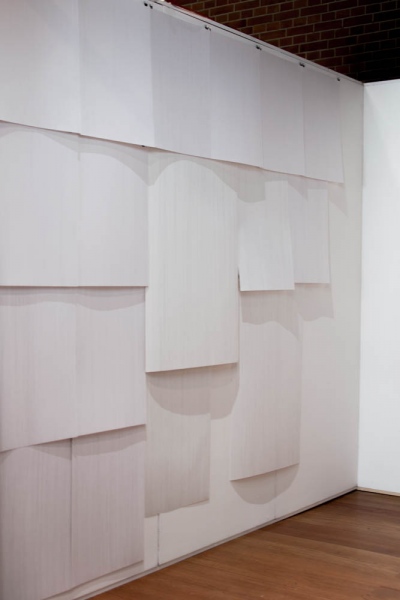
# 1
THERE (WHERE DISTANCES DISAPPEAR) (2015)
A space exists in the relationship between the two places that are Colpani's home: the North of the Netherlands and the Po plain area in Italy. It is the abstract landscape that she inhabits and to which she relates.
# 1
(2) 13,4 x 20 cm, digital print.
This image is produced by combining in a collage the fog and skies from the North of the Netherlands on a photograph taken in Piacenza (IT), Colpani's home town.
# 2
(2) 80 x 95 cm, digital prints.
Trying to make the relationship between Piacenza and the North of the Netherlands more tangible, Colpani decomposed graphically their connecting element: fog.
# 3
(2) 45 x 60 cm, pencil on paper
Last step of the decomposing process: a drawing of fog, constructed with very small lines entangled with each other.
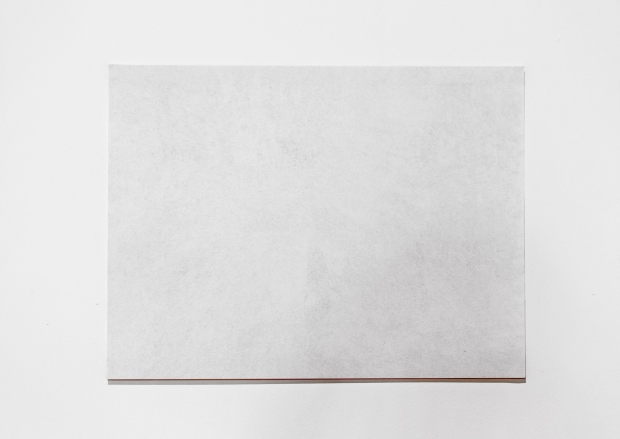
# 3
HET GEMAAKTE LAND (2014)
This work reflects on the domestic qualities of public space, particularly in the context of Dutch urban living environment.
# 1 Het gemaakte land
Audio (loop), voice Marie-Anne Schouten
A female voice receits the following sentence many times: “Het is een kunstmatig, een gemaakt land. De Nederlanders hebben het gemaakt. Het bestaat, omdat de Nederlanders het bewaren. Het zou verdwijnen als de Nederlanders het verlieten”. The text performed in the audio fragment comes from the book “Nederlands en zijn bewoners” by Edmondo de Amicis (1870, translation by Ronald Fagel).
# 2 Het gemaakte land: window frames
Digital prints (3), 187 x 100 cm; 80 x 70 cm; 108 x 80 cm, Amsterdam (NL)
Three photographs of window frames from Amsterdam (Surinameplein and surroundings). Window frames are objects inbetween private and public space, that indirectly defines our relation to others and to outside/inside space itself.
# 3 Het gemaakte land
(5) A5 flyers, designs on commission by Jens Domela Nieuwenhuis, Story Studio, Johanna Ehde, Rosie & Paul, Liset van de Graaf.
The flyers feature five statements from “Benoemen, nummeren en begrenzen: handboek voor gemeenteambtenaren die zijn belast met het benoemen van de openbare ruimte, het nummeren van vastgoedobjecten en het begrenzen van gebieden”. Colpani commisioned five different designers to each design a flyer for one of the sentences she selected out of the book.
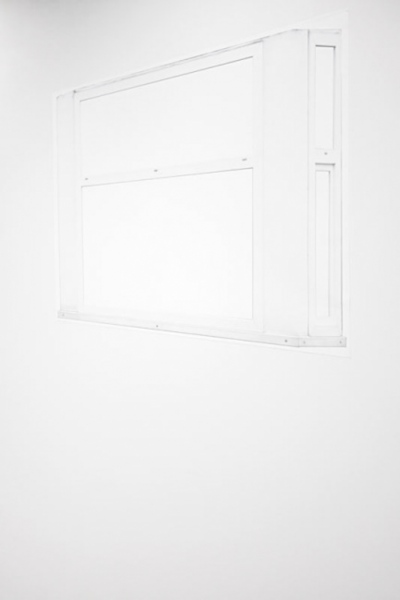
ELSEWHERE (2014)
Download full book here or purchase the printed book here.
Elsewhere researches the idea of foreignness by looking closer at how our environment, our stories and the objects we own are given shape. We design our objects and our living environment and they, in turn, direct our perception and our believes continuously and almost seeminglessly.
The book is divided in five chapters. Each chapter approaches the subject from a different point of view. I have spoken to friends who have a strong experience in relation to each thematic and I have either interviewd or discussed different artists and asked them about their practices in relation to art’s potential to subvert our personal experiences by producing foreignness and putting us in the position of the newcomer, the stranger who has to learn how to “read” the surroundings all over again.
chapter 1, “a place to speak from”, A perceptive and affective engagement with the environment, that includes reactions of protest or refusal of the environment itself. Interview with Sarah Natsumi Moore.
chapter 2, “to tell”, “Finding a fitting place for oneself in the world is finding a place for oneself in a story.” (Jo Carson). Artists/ authors discussed: Paul Smaïl, Anil Ramdas, Rebecca Belmore. Interview with artist Dan Higgins.
chapter 3, “to see”, “Space is the surface where a culture, an era, an individual project their conduct, their past and their desires.” Ton Lemaire. Author discussed: Wim Wenders. Interview with artist Helene Sommer.
chapter 4, “to collect”, The materiality that we think might make us unauthentic is in fact part of who we are.
Artist discussed: Lorna Simpson. Interview with Denis Pires.
chapter 5: “to change”, Art makes us choose to become foreign to things all over again.
